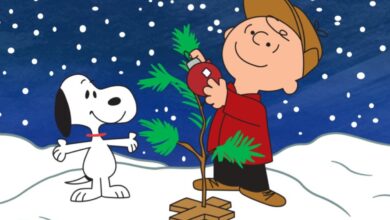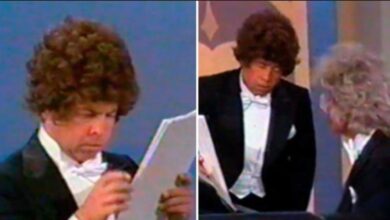The Lovin’ Spoonful’s “Daydream” Blends Sunshine Pop with Folk-Rock Soul to Redefine 1966
Released in early 1966, “Daydream” by The Lovin’ Spoonful introduced a warm, whimsical sensibility to the pop charts that stood in stark contrast to the British Invasion and the growing intensity of the American rock scene. The song, with its breezy melody and laid-back attitude, reached No. 2 on the Billboard Hot 100 and quickly became one of the defining tracks of the sunshine pop genre. It was not only a commercial success but also a cultural marker—signaling a shift toward more relaxed, feel-good songwriting during a rapidly evolving era.
The Lovin’ Spoonful was founded in New York City in 1965 by John Sebastian, Zal Yanovsky, Steve Boone, and Joe Butler. Sebastian, the group’s frontman and primary songwriter, came from a Greenwich Village folk background, which shaped the band’s early sound. Unlike many contemporaries who leaned heavily into electric blues or psychedelic experimentation, The Lovin’ Spoonful favored a fusion of jug band roots, folk melodies, and catchy pop hooks. Their approach gave rise to a uniquely American response to the British Invasion—one that was authentic, upbeat, and steeped in the traditions of the East Coast folk revival.
“Daydream” was born out of a moment of pure, unfiltered calm. According to Sebastian, the song came to him during a mundane break while working at a recording studio. With nothing to do but sip a soda and lounge in the sun, he imagined a simple life free from stress and expectations. That mood became the heart of the song—a three-minute escape into a world where time slows down and joy lives in the smallest moments. It was a concept that, in 1966, resonated with a youth culture yearning for gentler alternatives to the turbulence of politics and war.
The recording process for “Daydream” matched the song’s mellow atmosphere. Unlike the overly produced studio sounds that dominated the charts, the Spoonful embraced a more organic approach. The instrumentation was minimal but effective: brushed drums, jangly guitars, and Sebastian’s lazy drawl evoked the sensation of swaying in a hammock on a spring afternoon. Producer Erik Jacobsen captured that simplicity beautifully, letting the song breathe without over-polishing its charm. It was music that sounded like it was made on a porch, not in a booth.
When “Daydream” hit the airwaves, it was an instant success. It shot up to No. 2 on the Billboard charts and became a top 10 hit in the UK. The Lovin’ Spoonful had already found success with their breakout single “Do You Believe in Magic,” but “Daydream” established them as leaders in a new wave of American pop music—one rooted in innocence and optimism rather than rebellion or angst. The song’s accessibility and charm helped bridge the gap between mainstream pop fans and more folk-oriented listeners, bringing together a wide and diverse audience.
Culturally, “Daydream” offered an antidote to the prevailing sense of urgency in mid-1960s music. As protest songs grew louder and rock became more aggressive, the Spoonful’s easygoing energy felt almost revolutionary in its restraint. The track’s influence was quickly felt—The Beatles famously cited “Daydream” as a major inspiration for Paul McCartney’s “Good Day Sunshine,” which carried a similar lightness and melody. In that sense, “Daydream” didn’t just reflect a moment—it shaped the direction of pop music for the rest of the decade.
For The Lovin’ Spoonful, the success of “Daydream” opened new doors. They embarked on international tours, appeared on major TV shows, and became a staple of AM radio. The song solidified their image as the happy-go-lucky band in an age of revolution, giving them a recognizable niche in an otherwise tumultuous cultural landscape. Sebastian’s songwriting gained critical acclaim, and his distinct lyrical voice—playful, sincere, and emotionally accessible—became the band’s defining trait.
In terms of genre influence, “Daydream” played a pivotal role in the development of sunshine pop, a subgenre known for its upbeat melodies, clean production, and cheerful harmonies. Bands like The Turtles, Harpers Bizarre, and even early Bee Gees drew from this style. It also helped pave the way for the eventual rise of soft rock in the 1970s. The song demonstrated that pop music could be engaging and meaningful without needing to shout—a lesson that would influence generations of songwriters to come.
Over the years, “Daydream” has been covered by a wide range of artists. Bobby Darin offered a jazz-infused version shortly after its release, while Rick Nelson added a rockabilly twist. More recently, Yo La Tengo and others in the indie world have nodded to its melodic charm in both covers and pastiche. Each interpretation underscores the song’s flexibility and enduring appeal—its structure is simple, but its emotional tone is universal.
Around the time “Daydream” was released, The Lovin’ Spoonful was enjoying a rapid ascent. However, internal tensions and changing musical tastes would eventually lead to their decline by the decade’s end. Still, the song remains untouched by the band’s later challenges. It stands as a snapshot of a group at its creative peak, capturing the lightness of a brief moment in pop history when the world seemed, for once, to slow down.
Today, “Daydream” continues to find new life in film, television, and advertising, often used to conjure feelings of nostalgia and calm. Its distinctive whistle intro and dreamy vibe have made it shorthand for relaxed joy in visual storytelling. From Wes Anderson movies to classic car commercials, the track lives on not only through its original recording but in the emotional shorthand it provides to creators looking to set a certain mood.
The song’s legacy also endures through its simplicity. In an era defined by complexity and confrontation, “Daydream” remains refreshingly straightforward—a testament to the power of melody and mood. It’s a song that doesn’t demand attention but earns it through sincerity and ease. For many, it evokes memories of sunny afternoons, first loves, and moments of peace. It’s music for the heart, not just the ears.
In shaping the sound of mid-’60s American pop, The Lovin’ Spoonful crafted a song that didn’t just chart well—it changed how listeners understood emotional resonance in music. “Daydream” proved that joy, when delivered honestly, could be just as profound as pain. And in doing so, it carved out a permanent space in the collective memory of popular music.





